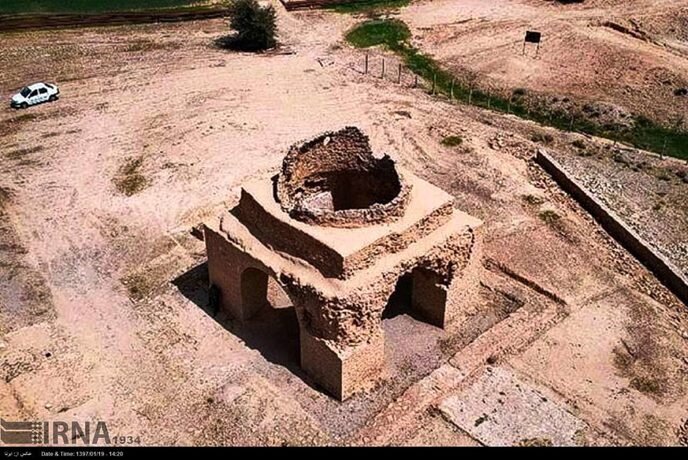Qasr-e Shirin ruins prospective candidate for UNESCO status

TEHRAN–Qasr-e Shirin’s tourism chief believes that the Sassanid ruins of the western Iranian city have high potential to be registered on the UNESCO World Heritage list.
“A Sassanid collection in this city has a very high potential for world (UNESCO) registration, which we are pursuing this important point to introduce these unique works to the whole world,” the tourism chief of the ancient city said on Wednesday.
Within the Sassanid complex of Qasr Shirin, there are four significant traces of the Sassanid period, including Khosrow's mansion, Chahar-Qapi fire temple, Ban fortress, and a water-supply canal, the official explained.
Qasr-e Shirin’s ensemble is a part of a Sassanid axis stretched from Iran’s Kangavar to ancient Ctesiphon, now situated in Modern Iran, the official said.
The two neighboring countries seek to introduce this cultural heritage axis by doing their best to have it registered in the UNESCO list of World Heritage, he added.
Last October, a new round of archaeological excavation was commenced in Qasr-e Shirin city to shed new light on its history.
Inscribed in UNESCO’s Tentative list of Cultural Heritage, the historical ensemble of Qasr-e Shirin comprises architectural and urban remains from the late Sassanian period and the early Islamic periods such as the palace of Khosrau II, the Chahar-Qapi monument, Ban Qal'eh and the remains of a Safavid caravansary.
The name of the city means “The castle of Shirin” who was the wife of Khosrau II, the Sasanian king (r. 590 - 628).
Qasr-e Shirin has always played a pivotal role because of its strategic geographical position and its location on the Silk Road; as a crossroads, it connected ancient Persia’s plateau from East, including Rey, Hamadan, and Kermanshah to Western civilizations such as Chaledea and Babel.
The palace of Khosrau II is a magnificent example of Sasanian architecture. The main part of the building includes a rectangular hall covered with brick arches. Based on historical facts, the palace was built in a vast garden where wild animals lived because khosrau was interested to keep animals.
Chahar-Qapi or Chahar Qapu is exactly a Chahartaq, which literally means “four arches,” that is an architectural structure consisting of four arches or short barrel vaults between four corner piers, with a dome on squinches over the central square; this square, the lateral bays under the arches or barrel vaults together constitute a room of cruciform ground plan.
Chahartaq and Iwan are the most important architectural units invented and developed by Iranian architects. The main use of this building was a fireplace to keep the holy fire of the Zoroastrian religion.
Safavid Caravansary of Qasr-e Shirin comprises large chambers and yards for the ancient caravans. The other name of this monument is Abbasi, which refers to the collection of ‘Abbasi caravansary’ scattered in most of the Iranian cities.
The Sassanid era is of very high importance in the history of Iran. Under Sassanids, Persian architecture and arts experienced a general renaissance. Architecture often took grandiose proportions, such as palaces at Ctesiphon, Firuzabad, and Sarvestan, which are amongst the highlights of the ensemble.
Generally, a Sassanid archaeological landscape represents a highly efficient system of land use and strategic utilization of natural topography in the creation of the earliest cultural centers of the Sassanid civilization.
In 2018, an ensemble of Sassanian historical cities in southern Iran, titled “Sassanid Archaeological Landscape of Fars Region”, was named a UNESCO site. The ensemble comprises eight archaeological sites situated in three geographical parts of Firuzabad, Bishapur, and Sarvestan.
The World Heritage reflects the optimized utilization of natural topography and bears witness to the influence of Achaemenid and Parthian cultural traditions and of Roman art, which latter had a significant impact on the architecture and artistic styles of the Islamic era.
Apart from architecture, crafts such as metalwork and gem engraving grew highly sophisticated, yet scholarship was encouraged by the state. In those years, works from both the East and West were translated into Pahlavi, the language of the Sassanians.
AFM
Leave a Comment